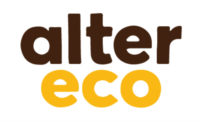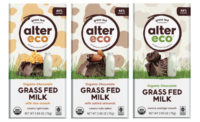Alter Eco launching foundation to promote dynamic agroforestry
Chocolate company aims to expand climate-positive model.

Alter Eco is set to launch the Alter Eco Foundation next month.
As the new charitable arm of the company, the Alter Eco Foundation will work directly with cacao farmers to provide resources to help them transition to dynamic agroforestry, a method of regenerative agriculture with environmental, economic and social benefits. This next-generation approach to farming is already showing significant potential to reduce greenhouse gas emissions. As one of the first brands to bring agroforestry-grown chocolate to the U.S., Alter Eco is launching its Foundation to extend this commitment even further.
The foundation’s ultimate goal is to make the company’s climate-positive model available to the entire cacao industry, expediting adoption within the cacao supply chain globally through advocacy and education.
According to data from the Environmental Protection Agency, 24 percent of global greenhouse gas emissions can be attributed to agriculture and forestry. If current conventional agricultural practices don’t change soon, the UN also estimates that most healthy soil will disappear within 60 years.
Dynamic agroforestry is a method of regenerative, climate-positive farming that integrates diverse crops into monoculture, or single-crop, systems. Some of the benefits include improving natural biodiversity and soil health, drawing carbon from the atmosphere, strengthening cacao health, improving farmer working conditions and creating additional revenue streams for farmers from the various crops planted with the cacao. Research has shown that this method of sustainable farming can have a significant impact on reversing global soil degradation caused by monocultures, chemical use and global climate change.
Four hundred of the 1,800 farmers Alter Eco sources cacao from in Ecuador have already transitioned some of their parcels to the dynamic agroforestry model. With $1.5 million committed over the next five years, the Alter Eco Foundation will help transition cacao farmers in its supply chain and beyond – starting with the remaining 1,400 in Ecuador – while driving awareness and education about the practice globally.
“You cannot reduce greenhouse gasses and mitigate climate change without addressing soil health through better farming practices,” said Alter Eco CEO Mike Forbes. “These are the foundations for long-term solutions that have real impact. Our specially-farmed cacao is estimated to increase carbon sequestration by 83 metric tons of CO2 per acre over 20 years, compared to conventionally-grown monoculture cacao.
“At scale, if the global cocoa industry transitioned its approximately 30 million acres to our dynamic agroforestry model, about 2.5 gigatons of CO2 would be sequestered from the atmosphere over 20 years. That’s why the work we’re doing with the Alter Eco Foundation is more essential than ever to improve the health of the planet long-term. We have to make the benefits of regenerative agriculture, and the best practices we’ve honed using this method, accessible for global adoption in the cacao industry and beyond.”
Alter Eco currently sources 41 percent of its cacao beans from the UNOCACE cooperative in Ecuador, which is committed to transitioning 100 percent of its farmers and land to regenerative methods. In 2015, 400 of its 1,800 farmers began the five-year process of transitioning their five to seven acre parcels of land from single-crop farming to dynamic agroforestry. This transforms manmade cacao fields into a more biodiverse, natural and self-sustaining cacao forest with up to 15 species of plants in each acre, which reduces water and fertilizer use, and increases carbon sequestration.
“When visiting our co-ops in Ecuador last year, I saw some farmers working in a shaded parcel with moisture in the air. Ecuador’s cocoa monoculture parcels are fully exposed under some of the strongest sun in the world,” said Forbes. “To me, this was a clear sign that the conventional farming methods used to grow our food are not respectful of the farmers working the land and it’s going to take a systematic approach to repair it.”
Looking for a reprint of this article?
From high-res PDFs to custom plaques, order your copy today!





